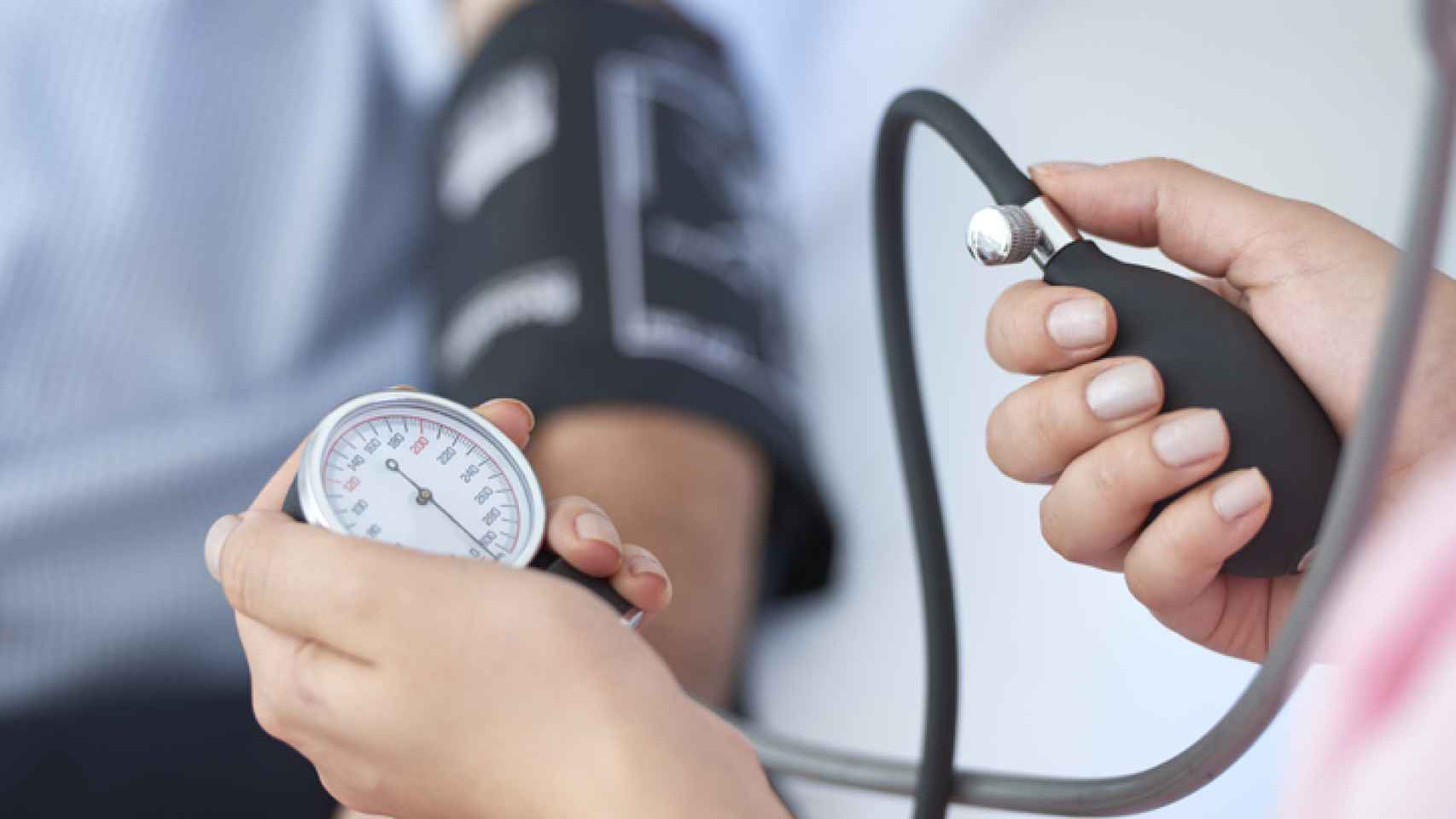Hypertension is a chronic disease characterized by a continuous increase in blood pressure figures above the limits over which cardiovascular risk increases.
According to numerous international studies, cardiovascular morbidity and mortality has a direct relationship with the increase in sustained systolic pressure above 139 mmHg or sustained diastolic pressure greater than 89 mmHg for both complications of coronary disease. as for cerebrovascular accidents, heart failure, peripheral vascular disease and renal failure, which is why it is the main cause of consultations at medical centers.
About a third of the adult population in developed and developing countries suffers from arterial hypertension; Above figures of 115/75 in blood pressure for each increase of 20 mmHg in systolic pressure or 10 mmHg in diastolic pressure, the risk of a cardiovascular event doubles.
Hypertension is an asymptomatic disease and easy to detect; however, it causes serious and lethal complications if it is not treated on time.
Chronic hypertension is the most important modifiable risk factor for developing cardiovascular disease, as well as for cerebrovascular and renal disease.
The blood pressure measurement, which is given in millimeters of mercury (mm Hg), consists of two numbers. The first, or largest, measures the pressure in the arteries when the heart beats (systolic pressure). The second, or smaller, measures the pressure in the arteries between heartbeats (diastolic pressure).
Blood pressure measurement in high-risk patients must be carried out correctly in order to avoid false negatives and even false positives.
Treatment for hypertension is indicated for:
- Patients with diastolic pressure values greater than 90 mmHg or systolic pressure greater than 140 mmHg in repeated measurements;
- Patients with a diastolic pressure less than 89 mmHg with a systolic pressure greater than 160 mmHg;
- Patients with a diastolic pressure of 85 to 90 mmHg who have diabetes mellitus or with proven vascular arteriosclerosis.
Patients who are prehypertensive or who do not qualify for specific treatment should adjust their modifiable habits, including:
- Weight loss in overweight or obese patients, primarily with exercise and a diet rich in fruits, vegetables, and fat-free dairy products (see: DASH Diet)
- Limiting alcoholic beverage consumption to no more than 30 mL of ethanol per day in males (ie, 24 oz [720 mL] beer, 10 oz [300 mL] wine, 2 oz [60 mL] whiskey) or 15 mL (0.5 oz) of ethanol per day in females or in lighter weight males.
- Reduction of daily intake of sodium chloride (common table salt) to no more than 6 grams (2.4 grams of sodium).
Although it is not possible to completely eliminate hypertension, several actions are very useful and necessary to prevent its appearance and to avoid the worsening of symptoms:
- Increase aerobic physical activity; activities such as walking, dancing, running, swimming, and cycling, for 30 to 60 minutes a day and at least three to five days a week. Properly performed, these exercises can reduce blood pressure values in hypertensive people until their values are within normal limits.
- Maintain a body weight within the standards corresponding to age and height, according to sex, which must be in accordance with the corresponding BMI;
- Minimize alcohol consumption: no more than 30 mL of ethanol should be consumed per day, which is equivalent to 720 mL (2 cans) of beer; 300 mL of wine (two glasses; a full glass contains 250 mL); 60 mL of whiskey (a fifth of a glass), for men; in women, half; reduce sodium intake, eat a diet rich in fruits and vegetables.
- A diet characterized by an abundance of fresh products of vegetable origin (fruits, vegetables, cereals, potatoes, nuts) is recommended, low in products rich in refined sugars and red meat, consuming olive oil as the main source of fat, and the intake of fresh cheese, yogurt, chicken and fish in moderate amounts, which is considered an ideal diet for the prevention of cardiovascular diseases.
- Deprive yourself of all types of tobacco (cigars, pipes, cigars, etc.).
- Control blood glucose (especially if the person has diabetes).








